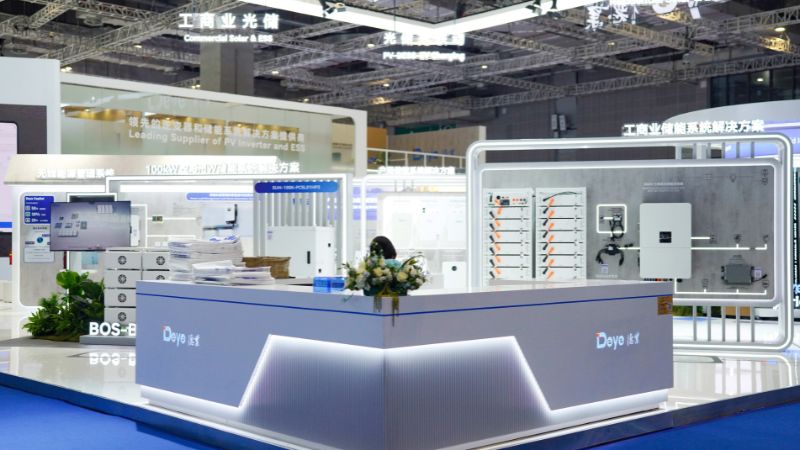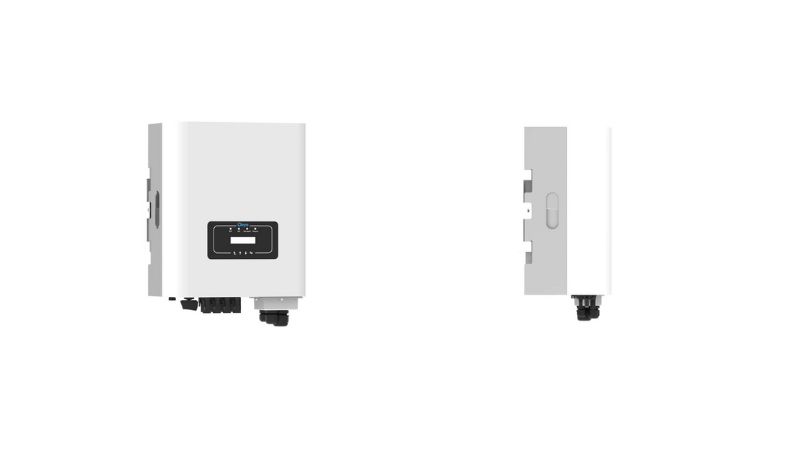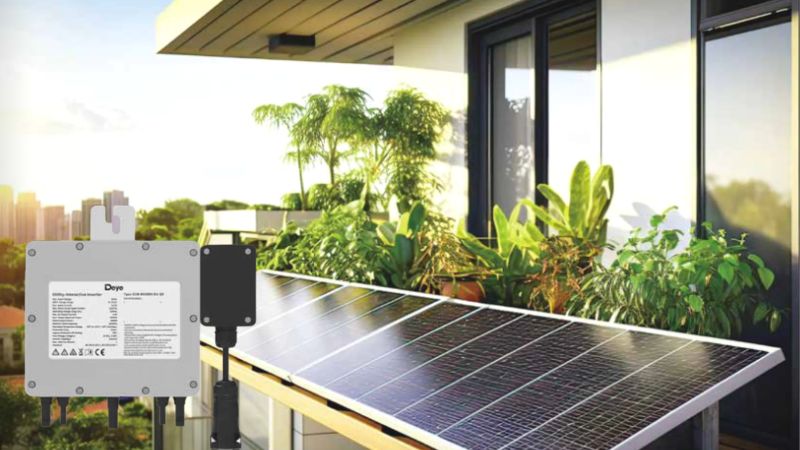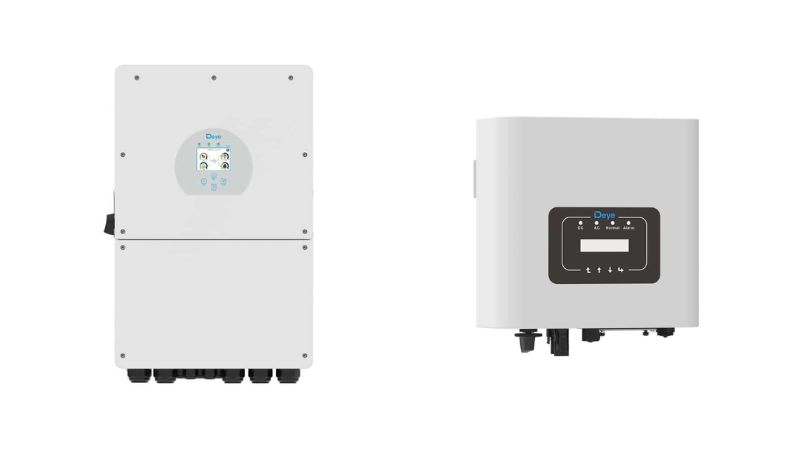When you go back home, you are facing a wet floor or moist indoor environment, and you will feel upset. Don’t worry, a dehumidifier can provide you with a dry and comfortable environment. It can absorb moisture out of the air, reduce humidity in the air, and rescue you from high-level moisture on indoor occasions.

What is a Dehumidifier?
A dehumidifier is an electrical appliance or device that removes moisture or water vapor from the air in an enclosed space or room. The function is opposite to a humidifier, and its primary function is to reduce the humidity level or the amount of water vapor present in the air.
Different Types of Dehumidifiers
Dehumidifiers work by removing moisture from the air to reduce humidity levels. There are two main types of dehumidifiers that operate on different principles.
Refrigerant Dehumidifiers
Refrigerant dehumidifiers, sometimes known as compressor dehumidifiers, are probably the type you’re most familiar with. These units draw moist air in through a fan and pass it over cold coils—similar to how a refrigerator works. The process condenses the water vapor into liquid, which collects in a tank or drains away.
- Portability: Many models are portable, allowing you to move them from room to room as needed.
- Working Temperature: They’re most effective at warm temperatures because the refrigerant technology relies on a significant temperature difference to condense the humidity from the air.
Desiccant Dehumidifiers
Desiccant dehumidifiers use a water-absorbing material—usually something like silica gel—to extract moisture from the air without using a compressor. They are particularly effective in cooler conditions where refrigerant models may struggle.
- No Compressor: The absence of a compressor makes them quieter and lighter.
- Efficiency: Although desiccant units can be more energy-intensive, they excel at dehumidifying in lower temperatures and are commonly used in areas that are not heated, such as garages and basements.
How Dehumidifiers Work

Understanding how a dehumidifier works is key to effectively managing the humidity levels in your space. Let’s uncover the key components and the correct usage to ensure you get the most out of this appliance.
Components & Functions
Fan: A crucial part of a dehumidifier, the fan is responsible for pulling humid air from your room into the unit.
Compressor and Coils: The heart of the system is the compressor, which cools the coils. As the air passes over these cold coils, condensation occurs, and moisture from the air is extracted.
Collection Tank: The water drips from the coils into a collection tank. When the tank is full, you’ll need to empty it unless you’ve set up a continuous drainage system using a hose.
Humidistat: This allows you to set your desired level of humidity. The unit will cycle on and off to maintain the optimal relative humidity.
Efficiency: Look for an Energy Star rating to ensure energy efficiency.
Using the Appliance Correctly
- Placement: Keep your dehumidifier away from walls and furniture to allow for proper air circulation.
- Humidity Setting: Set the humidistat to a level that combats moisture but doesn’t overwork the unit, typically between 30% and 50%.
- Maintenance: Regularly clean the air filter to maintain efficiency.
- Tank or Hose: Decide whether to use the tank for water collection or attach a hose for continuous drainage, which might require a nearby drain or a pump if elevation is needed.
- Electricity: Ensure the unit is plugged into an appropriate outlet and avoid using an extension cord to prevent fire hazards.
By familiarizing yourself with the components and following these usage guidelines, you’ll be able to maintain a comfortable and healthy environment in your home.
Selecting the Right Dehumidifier

When you’re in the market for a dehumidifier, it’s essential to consider the size of your space and the unit’s energy efficiency. Your goal is to maintain a comfortable humidity level without incurring unnecessary energy costs.
Considering Space and Size
Basements and Large Spaces:
- For areas under 600 square feet: A small-capacity dehumidifier, which typically has a water removal capacity of less than 30 pints per day, may suffice.
- For spaces between 500 and 1,500 square feet: Look for a dehumidifier with a capacity of 34-40 pints.
- When dealing with 1,000 to 2,500 square feet, A unit capable of removing 40-60 pints daily is more appropriate.
- For spaces larger than 2,500 square feet, or if you’re considering a whole-house solution, A large, non-portable dehumidifier with a capacity of over 60 pints is recommended.
Small Rooms like Bathrooms:
- A 10-pint capacity dehumidifier is typically adequate for spaces up to 500 square feet.
- For every additional 500 square feet, add an extra 4 pints to the unit’s capacity.
Benefits of Using a Dehumidifier
Buying a dehumidifier is a good choice for you. It can not only help reduce the humidity of your surroundings but is also important for your home improvement.
Controlling Humidity Levels
The primary function of a dehumidifier is to reduce and maintain the humidity level in the air to a comfortable and healthy range, typically between 30-50% relative humidity. High humidity can lead to various problems such as mold growth, musty odors, and an uncomfortable living environment.
Preventing Mold and Mildew Growth
Excess moisture in the air creates an ideal environment for mold and mildew to thrive. By reducing humidity levels, dehumidifiers help prevent the growth of these harmful microorganisms, which can cause respiratory problems and damage to buildings and belongings.
Reducing Allergens and Dust Mites
High humidity levels also promote the growth of dust mites and other allergens. Dehumidifiers help control these allergens by creating an environment that is less hospitable for them, providing relief for people with allergies or asthma.
Protecting Belongings and Structures
Excessive moisture can damage furniture, books, electronics, and even the structural integrity of buildings. Dehumidifiers can help protect these items by maintaining a dry environment, preventing warping, rotting, and other forms of water damage.
Improving Indoor Air Quality
By reducing humidity, dehumidifiers can improve indoor air quality by preventing the growth of mold, mildew, and other harmful microorganisms that can circulate in the air.
Enhancing Comfort
High humidity levels can make indoor spaces feel stuffy, sticky, and uncomfortable. Dehumidifiers help create a more comfortable living environment by removing excess moisture from the air, making it feel cooler and less oppressive.
Specific Applications
Dehumidifiers are particularly useful in areas prone to high humidity, such as basements, crawl spaces, laundry rooms, and bathrooms. They are also commonly used in industrial settings, such as warehouses, storage facilities, and manufacturing plants, to protect products and equipment from moisture damage.
Installing and Operating a Dehumidifier
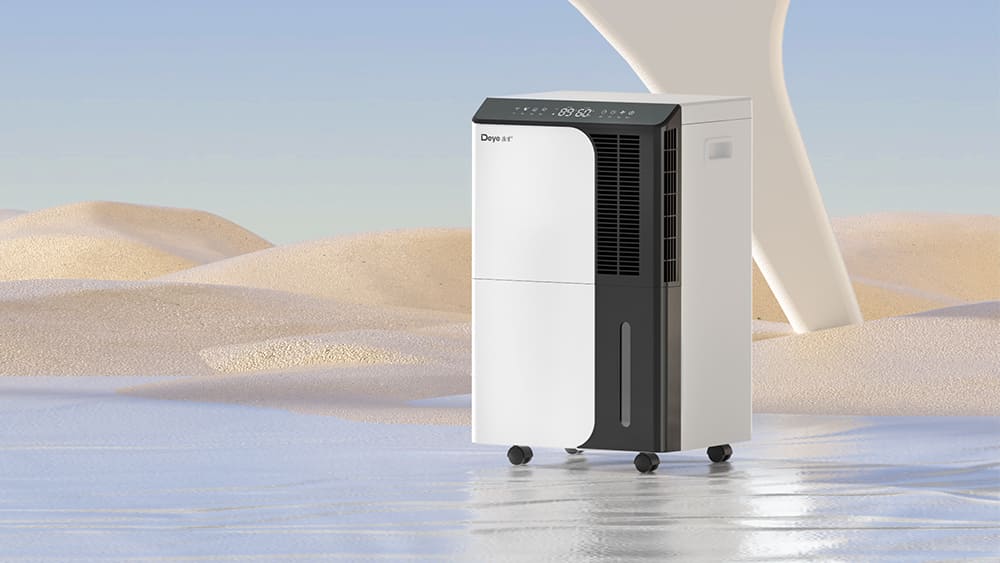
When you bring a dehumidifier into your home, proper placement and regular maintenance are key to ensure it operates efficiently and effectively. Here’s how you can get the best performance out of your dehumidifier.
Proper Placement
Firstly, find the right spot for your dehumidifier. You’ll want to place it in an area where it can have the most impact, like damp basements or laundry rooms. Ensure that all windows and doors are closed to prevent outdoor air from affecting its efficiency. Keep at least 6 inches of clearance around the unit for proper ventilation, and avoid placing it near furniture that can obstruct airflow.
- Placement Tips:
- Near a suitable drain if your model supports continuous drainage
- Away from walls and large furniture for unobstructed air intake
- On level ground to avoid water spillage
Be mindful of the dehumidifier’s grille, ducts, and vents—these should be free from obstructions to facilitate airflow. Most dehumidifiers also have an indicator light to show when they are operating or when the water reservoir needs emptying.
Maintenance Tips
Regular maintenance will keep your dehumidifier running smoothly. Start by emptying the water reservoir regularly or use a direct drain feature if it’s available, so you don’t have to monitor it as closely.
- Maintenance Checklist:
- Clean the air filter monthly (or as recommended)
- Inspect and clean the grille and vents periodically to ensure good airflow
- Check the humidistat to verify that it’s accurately measuring humidity levels
The humidistat is a crucial component that allows you to adjust the desired humidity level. Keep an eye on it to ensure your dehumidifier isn’t working overtime. Additionally, most units will have a light or alert to indicate when the filter needs a cleaning, or the reservoir is full. Make it a habit to respond promptly to these signals to prolong the life of your unit and conserve energy.
Energy Efficiency and Cost
When you’re looking to control the humidity in your space, dehumidifiers play a key role, but selecting an energy-efficient model can also impact your wallet positively. Energy efficiency in dehumidifiers is often reflected in the model’s energy factor – this is a measure of the liters of water removed per kilowatt-hour (kWh) of electricity used.
An energy-efficient dehumidifier can save you money on your electricity bill as it uses less electricity to remove the same amount of water vapor from the air compared to a less efficient one. Over time, the savings in electricity costs can make the initial investment in a more efficient unit worthwhile.
To ensure you get an efficient unit, look for models with high integrated energy factor ratings. Here’s an example of how energy efficiency relates to cost:
- Standard Dehumidifier (EEV = 1.00) Yearly Electricity Cost: $182
- High-Efficiency Dehumidifier (EEV = 1.85) Yearly Electricity Cost: $98
The difference could be almost a $100 saving each year, which means spending extra on an efficient model might pay off sooner than you think.
Furthermore, an efficient dehumidifier might also reduce the load on your air conditioning as dry air feels cooler, potentially saving you even more energy costs. Lastly, some models come with a reheater that warms the air slightly after removing moisture, which can help if you’re concerned about the dehumidifier cooling your space too much.
Remember, a more efficient dehumidifier is not just an investment in your comfort but also a cost-effective choice for managing your indoor climate.
Frequently Asked Questions & Answers
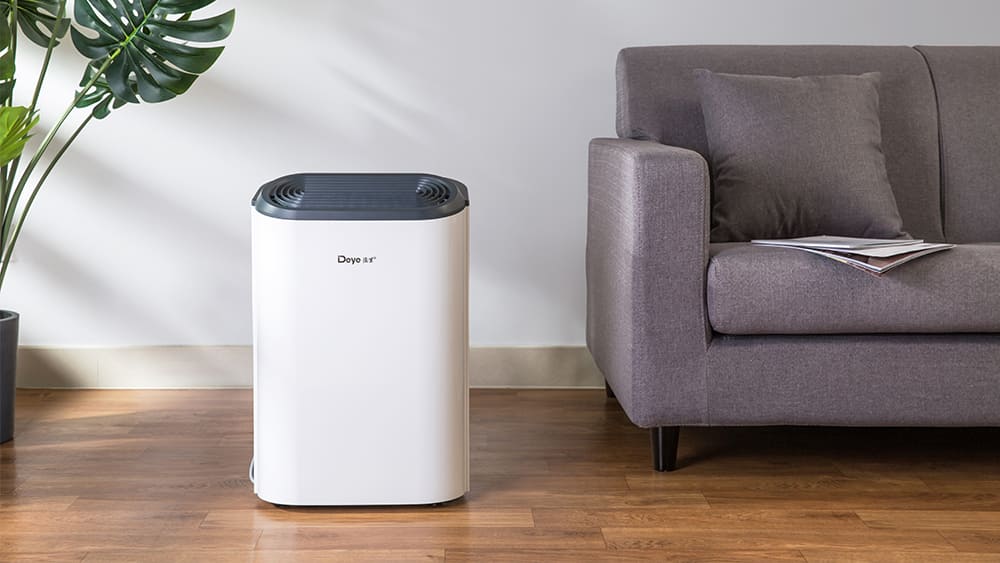
1. How can I know the humidity of my house?
Use a hygrometer. A hygrometer is an inexpensive instrument that directly measures the relative humidity in the air. You can purchase a digital or analog hygrometer at most hardware stores or online. Place it in a central location away from moisture sources like the kitchen or bathroom for the most accurate reading.
2. How can I know if I really need a dehumidifier?
Check your health condition and house condition. You can collect some information from your body and your house. If you notice wetness or fog on the inside of your windows, it’s a telltale sign there is too much moisture in the air. Or you always be allergic when you stay at home, both of them indicate that you need a dehumidifier in your house.
3. If I live in a basement, do I need a dehumidifier?
It is highly recommended to buy and use a dehumidifier, especially if you live in a humid climate. High humidity levels above 50-60% in basements can lead to problems like mold and mildew growth, musty odors, condensation, and damage to stored items and the structure itself. However, the ideal humidity is 30%-50%.
4. What is the difference between an air conditioner and a dehumidifier?
The choice between the two depends on your specific needs. If you primarily want to cool the air temperature and control humidity, an air conditioner is the better option. But while the air is colder, it also consumes more energy, and the price is also expensive. Therefore, if you only need to reduce excess moisture and want to keep a warm air condition, a dehumidifier may be more suitable and cost-effective.
5. The noise of the dehumidifier is too noisy; what can I do?
Spin the fan blades by hand; they should spin smoothly. If they wobble, tighten any set screws at the center of the fan.
If the noise persists, the fan motor could be faulty and may need replacement. Or you can choose desiccant dehumidifiers, they are quieter than refrigerant dehumidifiers.
